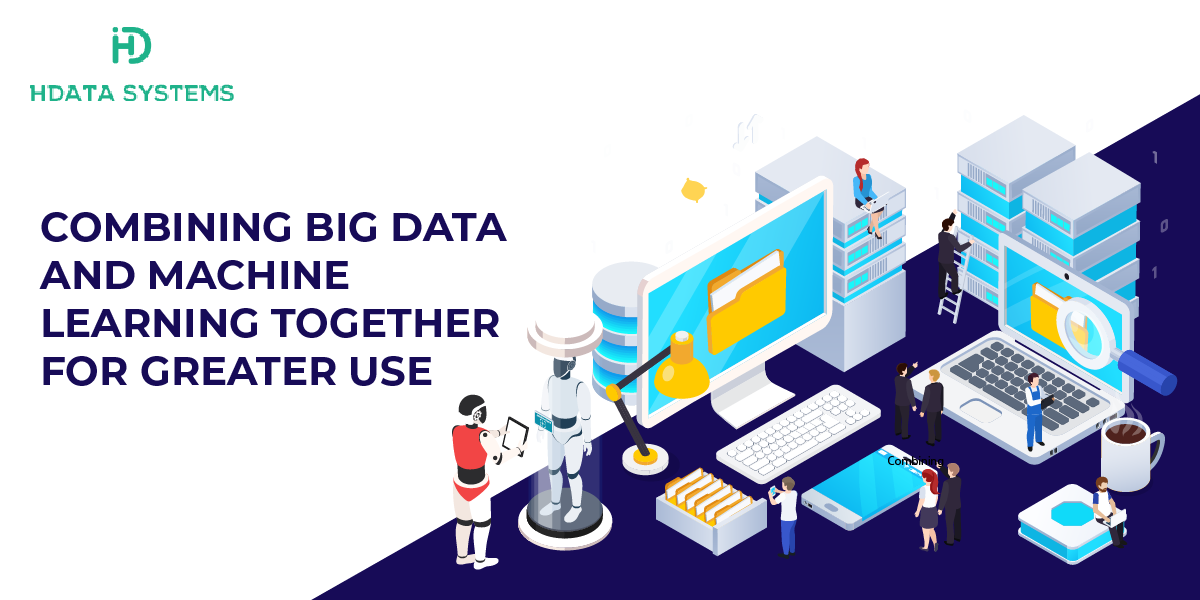Top Big Data Technologies And Solutions to Watch
- 142
- March 24, 2023

Big Data Machine Learning is the application of machine learning to the large amounts of heterogeneous data that we have available for strategic decision-making, with minimal human supervision. This article explains what Machine Learning is applied to Big Data and how it is making a difference for those companies that take advantage of it for their business.
The Big Data Machine Learning: What is it?
Big Data and Machine Learning are actually different concepts, but they have a strong relationship between them:
• When we talk about Big Data, we understand the recent phenomenon of generating large amounts of data that represent a challenge for its storage, processing, and transformation into useful knowledge for a purpose.
• On the other hand, Machine Learning is a branch of Artificial Intelligence that aims to equip machines with algorithms that can "learn" from experience and generalize behaviors, in the same way that a human brain can.
Big Data would be useless without being able to extract valuable information from the data. On the other hand, for Machine Learning systems to learn to recognize patterns and predict them, it takes a "training", using large amounts of data.
Therefore, the link between these two concepts is the need to learn from data automatically, taking advantage of statistical and computational intelligence to navigate large amounts of information with minimal - or without - human supervision. In this sense, Machine Learning is a natural application to Big Data.
Big Data Machine Learning Applications

The concept of Machine Learning takes more than half a century - it was introduced in 1950 by Alan Turing in his article "Computing Machinery and Intelligence". But it is with the rise of Big Data in the last decade that Machine Learning has experienced a renaissance and has become essential for all kinds of companies in different sectors of activity. Some of the most representative examples are:
• The autonomous car learning system, which can learn to detect patterns and objects fully automatically, thanks to the large amounts of data analyzed in real-time.
• The virtual assistants (like Apple's Siri, Alexa Amazon, Cortana Microsoft, or Google Now) both installed on mobile devices like smart speakers, use machine learning to refine their ability to learn to process natural language in which people express.
• Fraud detection used by banking and financial entities to detect if certain user behaviors are out of normal patterns.
• Recommendation of products and services by analyzing the behavior patterns of users, in order to anticipate their preferences and tastes, using by multitudes of services, such as Amazon, Spotify, or Netflix, for example.
• The dynamic pricing which adapts in real-time to demand and supply, such as systems used in the hotel industry and transport.
• Industrial applications such as improving production capacity, optimizing inventory and the supply chain, planning demand and prices, etc.
The challenges of Big Data Machine Learning

Big Data Machine Learning is a revolution for all those companies that want to establish data-driven processes, products, and services. However, there are great challenges that must be faced in the very near future:
• The availability of professionals with specialized training in Big Data and Machine Learning.
• The challenge of the Internet of Things.
• The commitment of both management and all levels of the company towards a data culture.
Why is there so much talk about machine learning today?
The methods that are employed in statistical modeling and machine learning have already been around for a long time. Different algorithms, such as vector support machines (SVMs) and neural networks, were devised long ago.
Some of the main reasons for the current boom in these techniques are:
• On the one hand, the computational capacity of computers has been increasing, making it possible to treat problems that previously could not be treated. This increase has been vertical (improvement of individual computing capacity) and also horizontal (increase in computing capacity when working with several computers at the same time using the Big Data paradigm).
• On the other hand, the data revolution, motivated by digitization, has led to a huge increase in data that can be processed and modeled to obtain knowledge of it. Years ago, there was much less data, being possible to see statistical models of a few hundred records.
Today we live in an exciting period in which data and the application of techniques that extract value from them will be strategic for many countries and sectors. You just have to see the investment that China, the US, and other countries are making to realize that Machine Learning and current modeling techniques are present and future.
Hyperlink InfoSystem is one of the leading software development companies based in India and has offices in USA, UK, UAE, France, and Canada. With 10+ years of experience in the industry, Hyperlink InfoSystem served more than 2,300 clients worldwide. The company has a team of 450+ highly skilled developers who works on any custom solutions using the latest technologies.